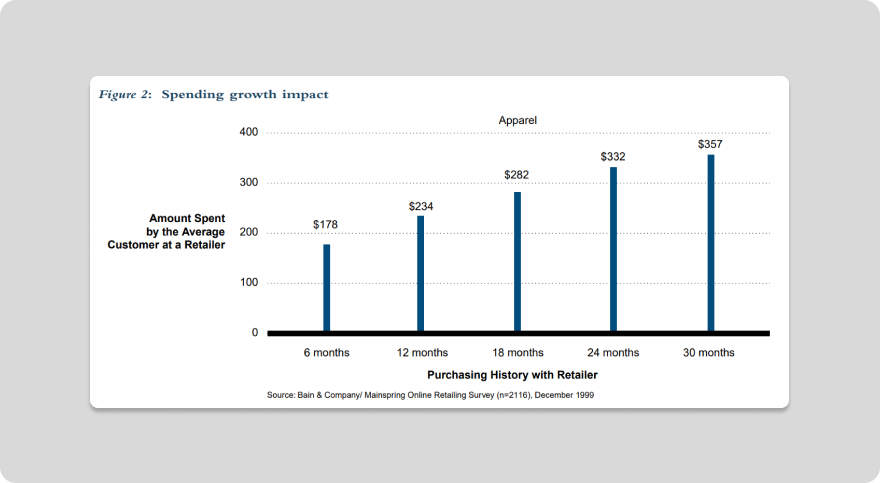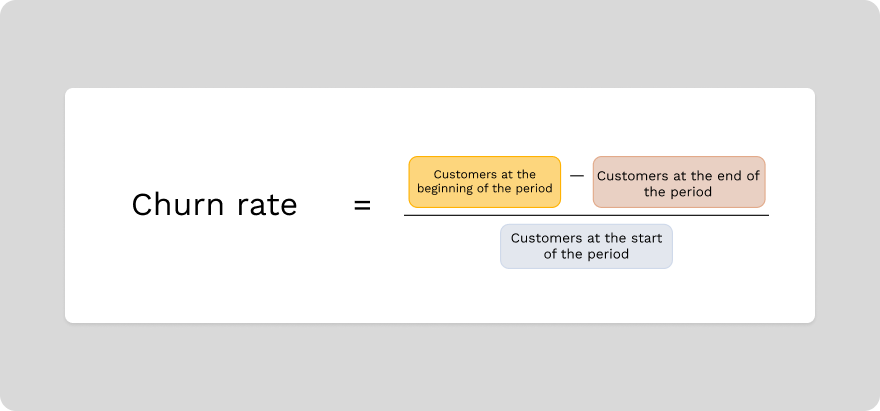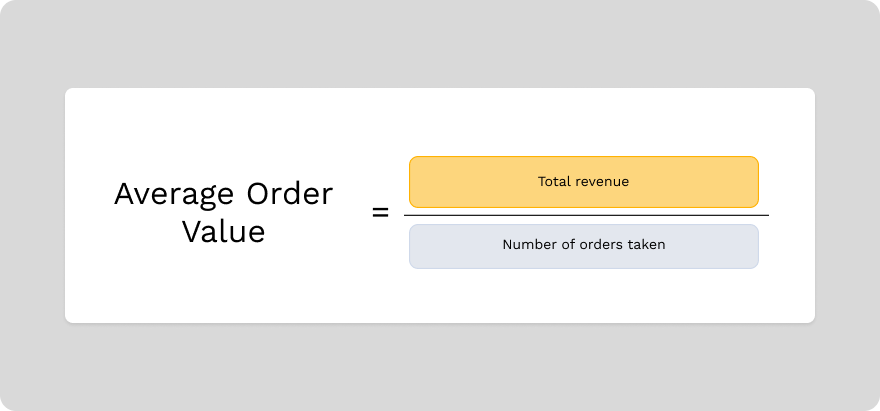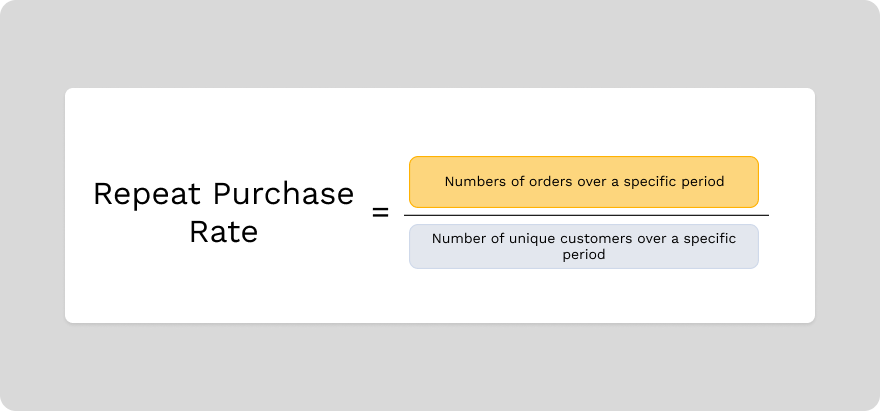
All Solutions

Explore all the solutions you can create with Paperform: surveys, quizzes, tests, payment forms, scheduling forms, and a whole lot more.
See all solutions











Connect with over 2,000 popular apps and software to improve productivity and automate workflows
See all integrationsSolutions
All Solutions

Explore all the solutions you can create with Paperform: surveys, quizzes, tests, payment forms, scheduling forms, and a whole lot more.
See all solutionsIntegrations

Connect with over 2,000 popular apps and software to improve productivity and automate workflows
See all integrationsResources
Customer Retention: 8 Strategies That Build Loyalty & Boost Profits

Generating leads and converting them into new customers is a time-consuming and costly process, which is why there’s no overstating how important repeat customers are for your business.
Not only is retaining customers way cheaper than acquiring them (between five and twenty five times depending who you ask), increased brand loyalty leads to better profitability and a bunch of free publicity courtesy of good ol’ fashioned word of mouth.
But how do you hold on to your customers past the initial purchase? Beg? Threaten? Pray? Offer them chocolate and lollies and cross your fingers?
While handing out lollies probably is a decent way to get customers to become loyal customers, there are better retention strategies. In this blog we'll outline them so you can build brand loyalty and start reaping the rewards.
What is customer retention?
Customer retention refers to the strategies businesses use to retain customers over time, with the goals of building customer loyalty, encouraging repeat purchases and increasing the overall profitability of each individual customer.
It’s a core element of any business strategy—whether you own a yoga studio in a small town or a huge SaaS company in Silicon Valley. Without it, you’re stuck in an infinite loop of lead generation and customer acquisition. That means a bunch more work for you (and a bunch less profit.)
A lot of businesses think customer retention just happens. It doesn’t. You need to build and sustain relationships with your customers. And like every relationship, it takes constant upkeep.
Customers don’t just hand you their loyalty. You need to earn it. Which is exactly what customer retention strategies help you do. When implemented well, they make sure:
- Customers are satisfied and;
- You are bringing value to them
Once you tick these boxes you’ll be rewarded with a dedicated audience that sticks by your brand, and won't even give your competitors a second thought.
Why does customer retention matter?
Depending on the website you trust (and the industry you’re in), you’ll find studies that say acquiring a new customer can cost between five and 25 times more than retaining an existing one.
The exact numbers don’t really matter—the logic rings true. Of course it costs less to keep customers you already have than it does to spend time and resources finding new ones.
Adobe reported that a staggering 41% of ecommerce store revenue is generated by only 8% of loyal customers. Not only do they spend more, they are 2x more likely to purchase new products than first-time customers.
For example, let's say you're a personal trainer. Bringing in new customers takes a lot of work. You have to run marketing campaigns, network at local gyms, put up flyers, and in general, dedicate a whole bunch of time and money to the acquisition process. That doesn't leave you much time to help your clients pump iron.
But, if you've got a loyal customer base lining up to reuse your services, you can spend less resources on marketing and other acquisition-related activities, and dedicate your time to providing value to your best customers, who use your service again and again.
Not convinced? Research conducted by Fred Reichheld from Bain & Company (the guy who invented a little thing called the Net Promoter Score) found increasing customer retention rates by just 5% increases profitability by more than 25%.
nps survey
They also found—or at least put numbers behind the idea—that the longer customers stay with your business, the more money they spend.
 (Source)
(Source)It’s safe to say that existing customers are integral to your business success. But let’s take a closer look at the individual benefits:
- **Repeat customers bring steady income.** With a stable customer base you can rely on consistent revenue without having to worry so much about customer churn, or any discounts your competitors may be running. This is where customer feedback solutions come into play, as they help you to identify and address any issues that your customers may be having with your products or services.
- Repeat customers are easier to sell to. When you’ve set customer expectations and built up trust, customers feel more confident in your brand and take less work to sell to. Plus they tend to spend more on each purchase.
- **Repeat customers give free word-of-mouth referrals.** There’s no better marketing strategy than happy customers, who will recommend your products or services to family, friends, work colleagues, or share it on social media.
- **Repeat customers spend more at important times.** Running a Christmas special or Black Friday deal? Your repeat customers tend to spend more during these kinds of promotions.
The benefits of customer retention are as clear as day. So, the question then becomes how do you know w_hether you have a good customer retention rate?_
Measuring customer retention metrics
Metrics, KPIs and spreadsheets aren’t everyone’s cup of tea. But trying to improve your customer retention rate without crunching the numbers and understanding the data, is about as effective as giving yourself a haircut with nail clippers.
Luckily, for folks suffering from arithmophobia (the fear of numbers), calculating customer retention rates and other metrics related to the customer lifecycle is super easy. We've outlined all the formulas you'll need below.
How to calculate customer retention rate
The customer retention rate is the percentage of customers that stay loyal to your business over a certain period of time. How exactly you define “retention” depends on your company and the industry you operate in.
For example, as a SaaS business, Paperform focuses on subscription renewals, whereas a fashion brand might emphasise repeat purchases, and a gym owner might look at contract renewals.
The first thing to do is select a timeframe. You can evaluate data monthly, quarterly, annually or even weekly—it’s up to what makes the most sense for your business.
Once you’ve settled on a period of time you’ll need three bits of info:
- The number of existing customers at the start of the chosen period (S)
- The total number of customers at the end of the chosen period (E)
- The number of new customers added in the chosen period (N)
Now just subtract the new customers added (N) from the number of customers at the end of the period (E). Divide the result by the number of customers at the beginning of the period (S), multiply by 100, and you're done.
As clear as mud? Check out the formula below for a clearer picture.

What is the golden number? There’s no single answer, but Statista put together a useful guide of average industry rates. As a general rule, you’ll want to take a serious look at how you manage customer success if your retention rate is below 75% (except in retail.)
How to calculate customer churn rate
Customer churn has nothing to do with butter. It's actually the opposite of customer retention—rather than calculating the number of customers who stay loyal to your business, you’re calculating the number that leave.
The formula is just a variation on the one you use to calculate customer retention rate. Let’s say you have 10,000 customers at the start of the month and finish the month with 8,200. Your churn rate would be 18%.

How to calculate average order value
Yep, another metric. Don’t worry, this one’s easy to observe too. Average order value (AOV) simply finds the average dollar amount spent every time a customer places an order from your business.
By understanding this you can evaluate your pricing strategy and see what changes you can make influence customer behavior and increase profits. So how do you do it?
All you’ve got to do is divide your total revenue by the number of orders. You can do this for whichever period you want, but it’s best to use the same time period you used when calculating retention rate to get a holistic view of your customer relationships.

How to calculate purchase frequency
Purchase frequency is pretty straightforward. It refers to how often customers (first time or otherwise) return to make a purchase.
This metric gives you an idea of customer engagement and empowers marketers to understand when to run different promotions based on certain buyer habits. For example, you may find sales are slow after Christmas, so you run a special sale in January to make up for the drop in sales.
To calculate purchase frequency, just divide the number of orders by the number of unique customers over a specific period of time.

7 strategies to boost customer retention
There are nearly innumerable customer retention strategies—from improving customer support to creating new products and services, or even laying down the virtual red carpet with a VIP program.
While the specifics vary from business to business, there are a few fundamental principles that don’t change. It comes down to:
- understanding customer needs
- satisfying said needs
- strive to provide value and support
Here are some of the best strategies to help boost customer retention, whether you’re a giant tech corporation or the owner of your town’s hottest bakery.
1. Implement a customer loyalty program
What’s the easiest way to get someone to do something? By offering a reward once they’ve done it. It’s the oldest trick in the book—just ask your parents.
Customers are no different. That's why customer rewards programs work so well. By incentivising purchases, people are encouraged to become repeat customers, while simultaneously being given more value through discounts and exclusive offers.
The numbers back this up. Since adopting a rewards program (customers earn redeemable stars with each dollar spent), Starbucks has grown its membership by a colossal 25%—with 40% of all sales attributed to loyalty members.
Not quite ready to build an entire loyalty program? An alternative is to send out a company newsletter. You can use it to share updates and new product information, as well as offer exclusive discounts to subscribers.
2. Give great customer support
To say that customer support is crucial for your retention rate might sound obvious (and it is), but as with other seemingly simple things, people tend to overlook it.
No matter the kind of business you have, customer service has to be your bread and butter. Good customer service improves brand perception, keeps customers happy and has a huge effect on sales.
“84% of surveyed consumers said that customer service was one of the key factors helping them decide whether to buy or not from the company.” (Zendesk, 2019)
We’ve all had bad customer service experiences, whether it's a waiter forgetting your order, or crappy support after a purchase. These seem innocuous enough, but a bad experience can be the difference between having a repeat customer and them turning to one of your competitors.
Our customer service team knows a few things about delivering high-quality support. We got Jo Roque, our Customer Success Lead, to give us a few quick tips for excellent customer service:
- Communicate clearly with customers
- Set expectations and give timeframes
- Use positive language
- Listen and empathise with customer feedback.
3. Run customer satisfaction surveys
Don’t guess what your customers want— ask them. By sending customer satisfaction surveys after each purchase, you can get deeper insights in to what customers think works (or doesn't work) about your business.
The beauty of customer experience surveys is you can customise them to your needs. Want to know what folks think of the checkout? Of your products? Of your website? Just put the right questions in and send it off.
customer satisfaction survey
This also goes a long way to building great customer relationships. By asking their opinions, acknowledging their issues and implementing suggested changes, you can make sure every customer feels valued.
Whether you send an automated survey to people who unsubscribe from your service, or a personalised email asking for feedback, the data you collect can then be used to strengthen your customer lifetime value and improve almost every aspect of your business.
4. Nail the customer experience
The customer experience refers to the journey from first landing on your website or setting foot in your store, to purchasing your product or service, as well as any follow-up interactions you might have.
Whether you’re an eCommerce business operating in the digital world or a traditional brick and mortar store existing in the physical realm, it’s your responsibility to give customers a fantastic experience from their first interaction with your business.
For web design that means you need quick loading times, a clean design, a responsive layout and a checkout process that’s fast and efficient. For interior design the terms differ, but the same principles apply—it’s about providing a pleasant experience.
customer effort score survey
A great example is the Apple Store. Apple invested huge resources in to retail stores that showcase their brand products with a beautiful aesthetic, and providing great customer service and aftercare support.
“You’ve got to start with the Customer Experience and work back toward the Technology, not the other way around” — Steve Jobs
Apple stores don’t just sell products: they are a holistic experience that creates brand loyalty. They engage customers, reinforce a sense of community and motivate word of mouth referrals; all by providing value and a memorable customer experience.
One of your business goals should always be looking for new ways to improve the customer experience. This is where customer and employee feedback really come in handy—ask your best customers and employees their opinions to get an idea of ways you can improve.
5. Build an active community
Customers no longer just think of a business as an entity that creates products or provides services. They want to know more about you—what charities you give to; the story behind your business; the processes you use to bring your products to life.
You can do this through landing pages, a forum for users to interact, blog posts, or interacting with customers on social media. By giving users this access you build a community that feel like they're part of something more than just an exchange of money for goods.
Social media engagement doesn’t just mean posting links to blog posts or product updates. Interact with users or customers of your products, share their stories, celebrate their successes and try to make it a two-way street rather than a place for announcements.
6. Become a trusted voice
As we’ve covered, your relationship with your customers doesn’t stop after they purchase a product from you. You want to provide ongoing value, and an excellent way of doing that is by creating informative and entertaining content.
By building comprehensive resources you separate your company from competitors, help customers hit their goals and become an authoritative voice that your audience trusts.
The most popular types of content include:
- Articles
- Tutorials
- Case studies
- YouTube videos
- Podcasts
Content marketing doesn’t just help retain customers, it also brings leads to your business. According to marketing firm Demand Metric, companies who post blogs between 1-2 times per month have 67% more leads than companies who don’t.
Focus on creating the kind of content that answers questions, solves common problems and offers advice that’s both useful and actionable. This is something we put a fair bit of emphasis on at Paperform, with outstanding results.
7. Go above and beyond
There is no greater way to build loyal customers than by surprising and delighting them. It’s about creating memorable moments for customers and, as cheesy as it may sound, demonstrating that you care.
This can take place in a variety of ways depending on your business, and doesn’t have to be a huge event. For example, if you owned a cafe it could be a gesture as simple as surprising a loyal customer with a complimentary muffin.
"Surprise and delight marketing plays directly into the human desire to feel recognized and valued. When a brand is able to surprise customers based on the unique behaviours and actions they undertake, it creates a personalized experience at scale that not only excites them but also makes them feel special.
It's particularly powerful for encouraging repeat purchases and engagement. By attaching an unexpected benefit or reward to a particular action, you can encourage consumers to repeat the activity that led to that reward."
—Vrinda Singh, Growth Lead at Paperform
Kleenex ran an excellent "surprise and delight" campaign a few years ago. They looked for folks on social media posting about feeling sick, or having a cold, then contacted their friends and family to organise a Kleenex Kit stocked with get-well goodies to be sent out to them.
Simple, right? It was effective too. The “Feel Good” campaign made over 650,000 impressions and resulted in nearly 2,000 positive interactions between Kleenex and its customers on social media. Most importantly, it gave the brand a human touch and let customers know that Kleenex cares about them.
Keep in mind that your 'surprise' doesn’t need to have monetary value. You can write notes or personal thank you letters, offer free samples, or look for any other creative opportunities to put smiles your customers' dials.
Over to you
When you run your own business it can be easy to assume that once you’ve acquired a bunch of customers, all you’ve got to do is sit back and watch the money stack up.
But it doesn't work that way. You've got to build a customer retention program to create a customer base and build brand loyalty. It won't just look good in company reports, it'll save you a bunch of cash on acquisition costs and ultimately raise your business’s bottom line.
Remember, no matter what strategy you choose to adopt (or if you use all of them), building brand loyalty takes time. Stick to your guns. Once you’ve built an engaged and active community, the rewards will justify the effort.
With Paperform you can generate surveys to understand customer needs, build a branded landing page for your new rewards program, and even automatically send contact details to your favourite CRM
Get started today with our 14-day free trial — no credit card required.
We'll walk you through how to sign a Word doc—and offer a much better alternative.
Everything we've shipped for Paperform, Papersign, and Dubble from July to September 2024. Get acros...
Learn how to boost productivity and automate processes with this essential guide to the 13 top workf...
In this guide, Rob Press from Deputy covers seven practical ways to boost productivity and build a b...